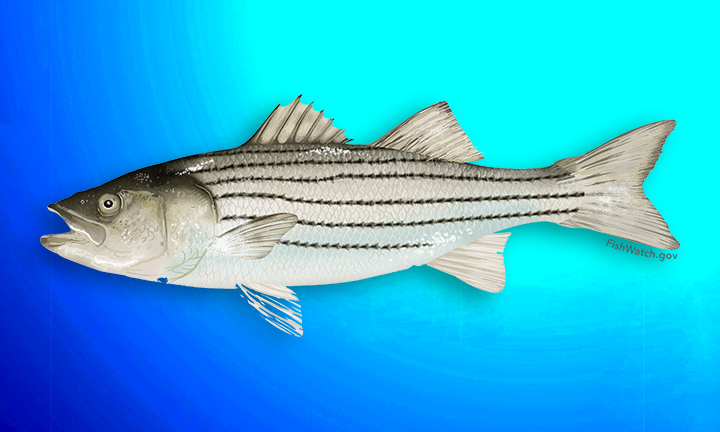
Atlantic striped bass (Morone saxatilis) are an estuarine species that can be found from Florida to Canada, although the stocks that the Commission manages range from Maine to North Carolina. A long-lived species (at least up to 30 years of age), striped bass typically spend the majority of their adult life in coastal estuaries or the ocean, migrating north and south seasonally and ascending to rivers to spawn in the spring.
Mature females (age six and older) produce large quantities of eggs, which are fertilized by mature males (age two and older) as they are released into riverine spawning areas. While developing, the fertilized eggs drift with the downstream currents and eventually hatch into larvae. After their arrival in the nursery areas, located in river deltas and the inland portions of coastal sounds and estuaries, they mature into juveniles. They remain in coastal sounds and estuaries for two to four years and then join the coastal migratory population in the Atlantic Ocean. In the ocean, fish tend to move north during the summer and south during the winter. Important wintering grounds for the mixed stocks are located from offshore New Jersey to North Carolina. With warming water temperatures in the spring, the mature adult fish migrate to riverine spawning areas to complete their life cycle. The majority of the coastal migratory stock originates in the Chesapeake Bay spawning areas, with significant contributions from the spawning grounds of the Hudson and Delaware Rivers.

